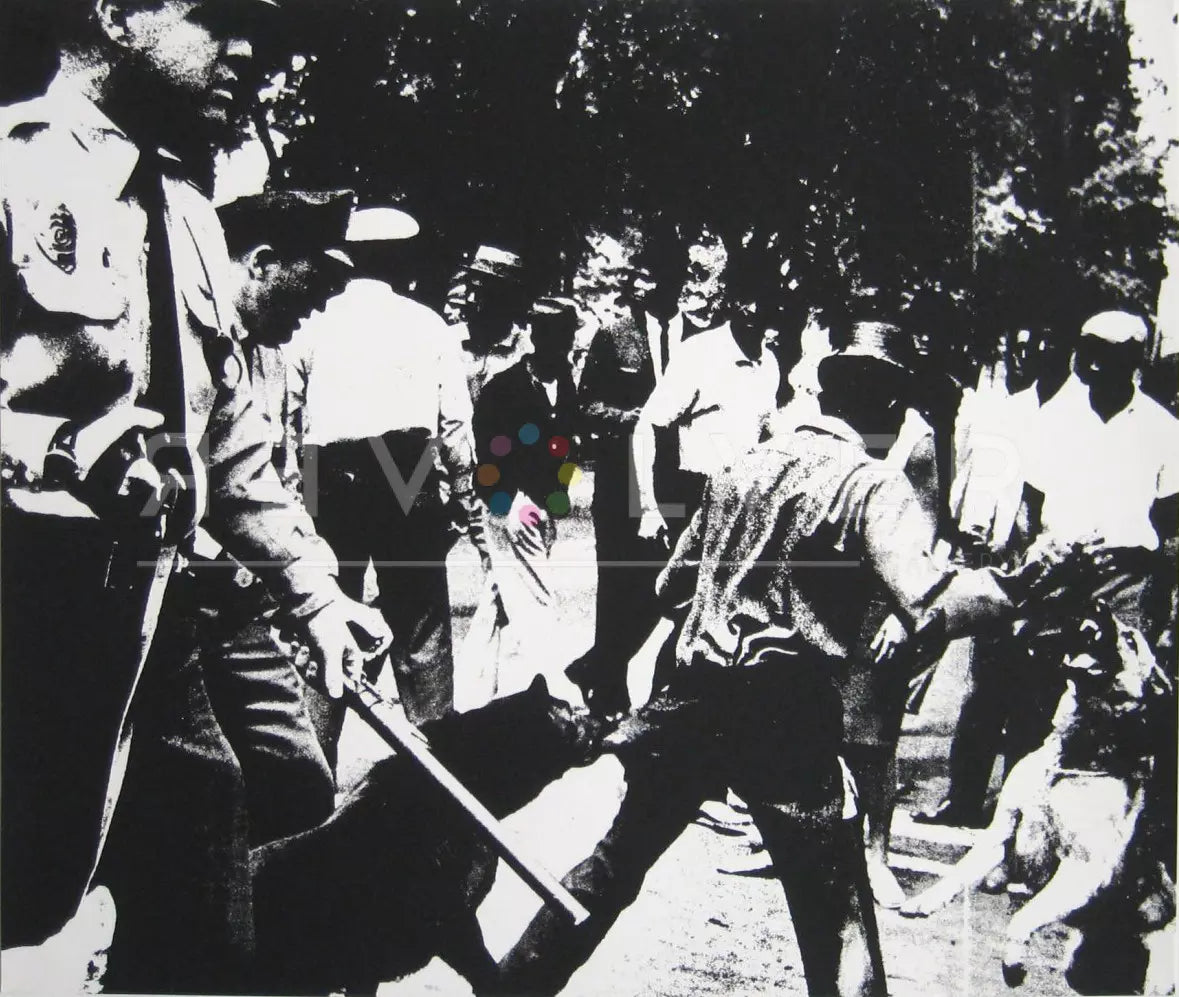
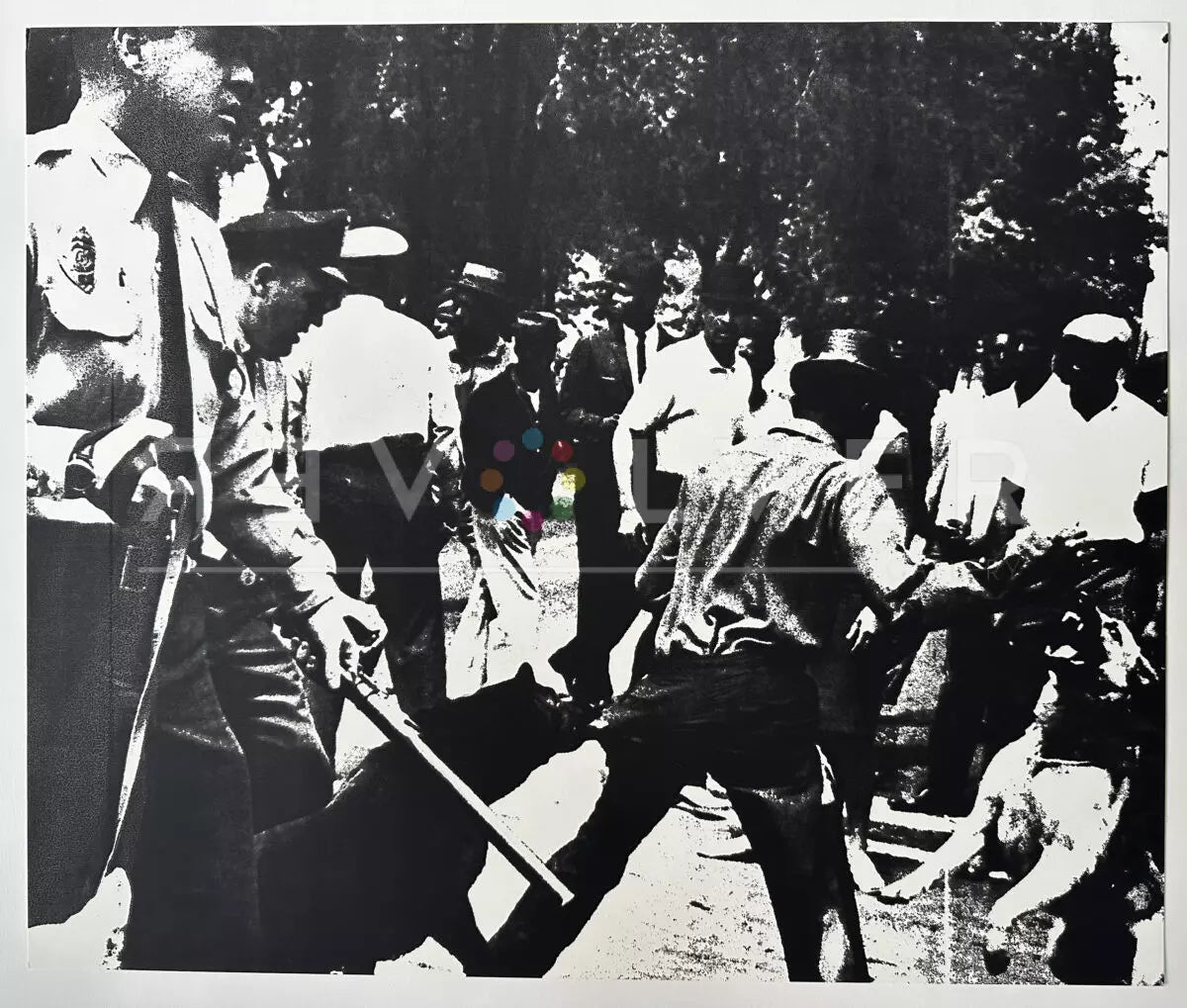
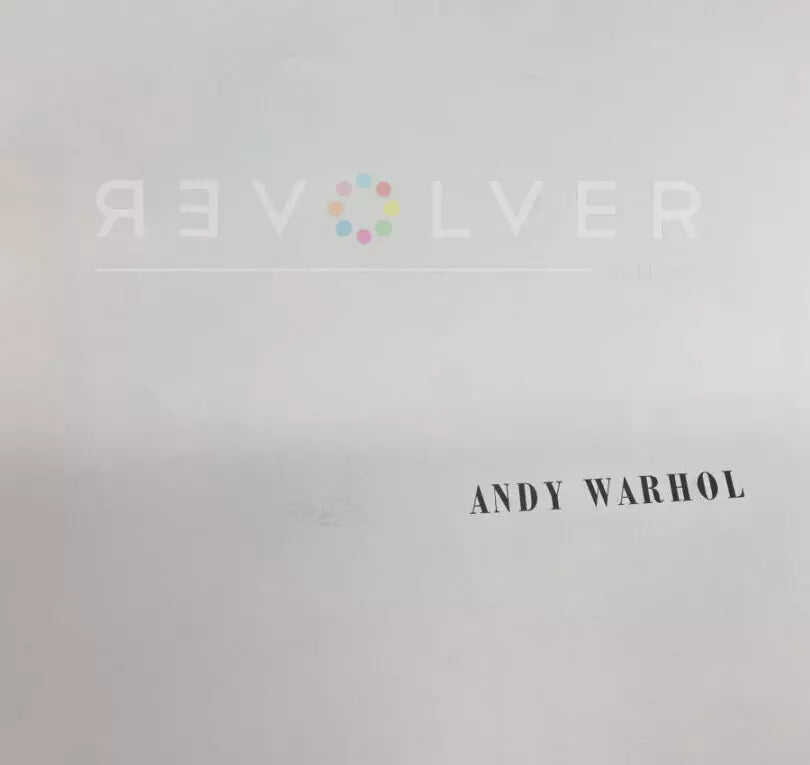
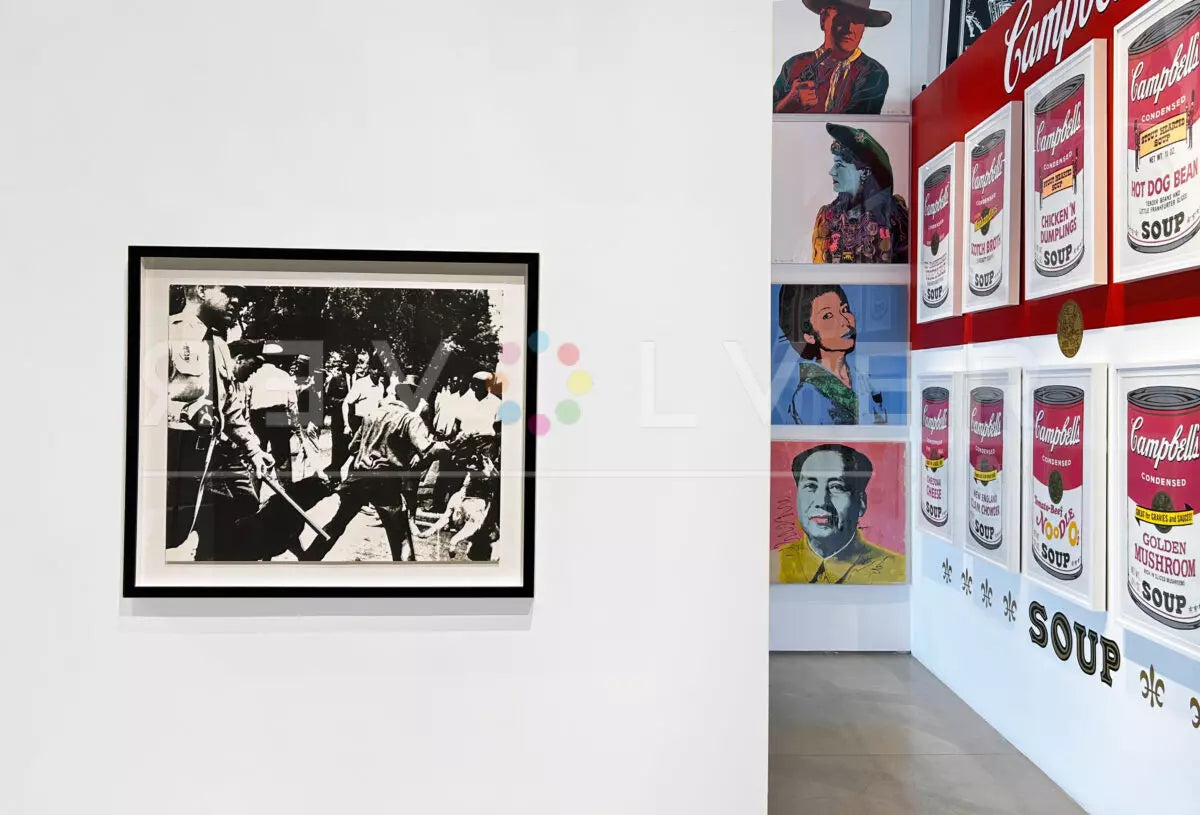
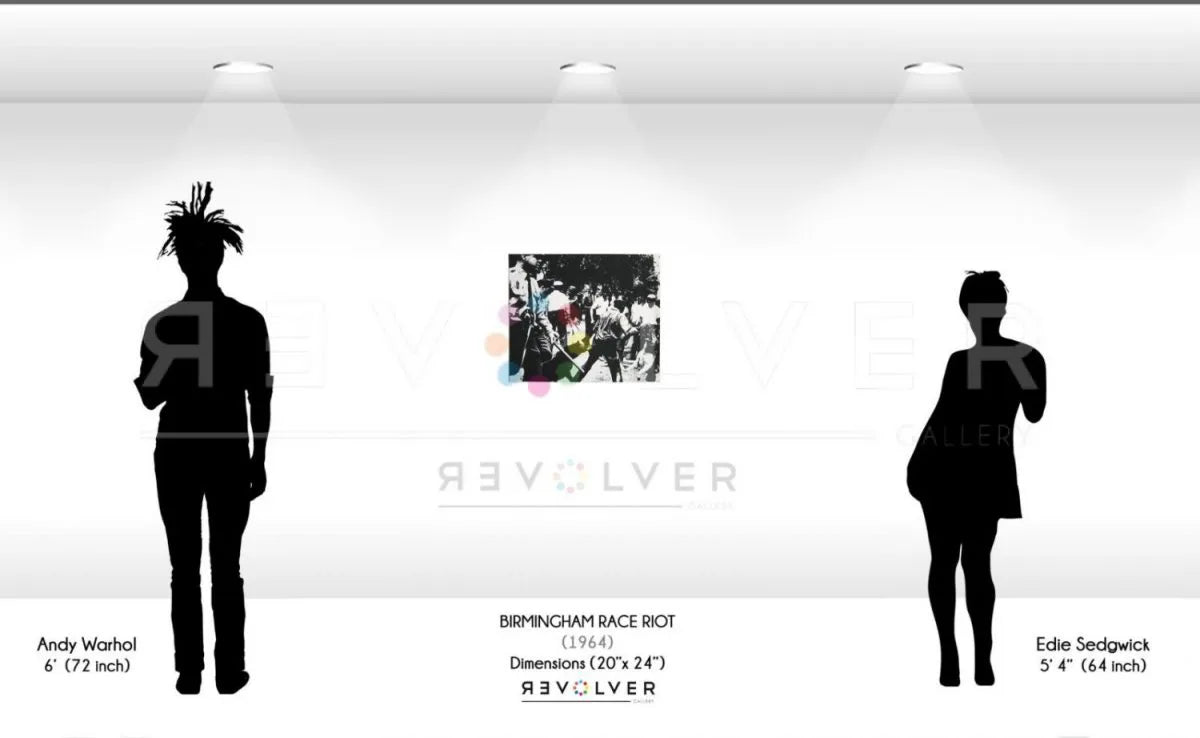
Andy Warhol - Birmingham Race Riot (FS II.3)
Artist: Andy Warhol
Year: 1964
Medium: Screenprint on Silk ScarfScreenprint on Strathmore Drawing paper
Edition: Edition of 500, 10 AP, unsigned. Published in the portfolio Ten Works by Ten Painters which is unsigned and is numbered on the colophon page.
Size: 20" x 24" | 50.8 x 61 cm
Birmingham Race Riot 3 by Andy Warhol
Birmingham Race Riot by Andy Warhol presents a sobering image of a pivotal moment in American history, from the 1963 American Civil Rights Movement. After the Birmingham Truce Agreement was made to begin partial desegregation of public spaces in Birmingham, Alabama, segregationists viciously bombed a motel closely connected with integration leaders as well as the home of Martin Luther King Jr.’s brother, Alfred Daniel King. A non-violent civil rights protest resulted, at that time referred to as a “race riot”, which led to a violent clash instigated by the Birmingham Police Department towards peaceful Black demonstrators.
Although credited as a 1964 Andy Warhol piece, Birmingham Race Riot 3 was taken by LIFE Magazine photographer Charles Moore in 1963, at the scene. Warhol reversed the picture, cropped it, and increased its contrast, making his edits to Moore’s work minimal. The piece was an early harbinger of the artist’s fascination with image reproduction as well as the debate that his habit would set off about the ethics of artistic appropriation. Charles Moore eventually sued Warhol for using the image, however, the dissension and repetition of the potent imagery increased the reach of the impactful photograph. Birmingham Race Riot 3 hails from a 1964 series comprised of works by Andy Warhol and his contemporaries entitled X+X (Ten Works by Ten Painters).
The strict black and white boundaries of Birmingham Race Riot mirror the racial divide that was the source of the unfair and inhumane treatment of civilians. Warhol’s heightened contrast of the black shadows against the stark-white highlights emphasizes the dramatic structure of the scene, and in conjunction with the abrupt crop, becomes a disorienting portrayal of the event that challenges the audience to engage fully with its content. The piece represents social injustice–‐ a theme not often explored by Warhol. While many of his pieces may allude to societal issues, this print is one of the only Warhol pieces that explicitly demonstrates the need for racial equality, which was a major matter of contention in society at the time. Unlike many of his other works, Warhol adds none of his usual pomp and flair to this print. However, his methods of obtaining the blueprint image and tone are very similar to his Death and Disaster portfolio, in which Warhol appropriated and refashioned violent newspaper images. The series explores Warhol’s fascination with image reproduction and the gradual numbing to gruesome imagery that society collectively began to experience with media inundation.
Warhol’s Birmingham Race Riot screenprint remains a controversial and thought-provoking testament to the artist’s rare foray into political commentary. Its separation from his bright, recognizable prints of products and famous faces leaves unanswerable questions about the artist’s deliberate choice to address such a significant event through his art. The evocative imagery of Birmingham Race Riot 3 prompts introspection on a critical historical event and presses us to promise that we will remain connected with its potent imagery and remember its significance, heeding Warhol’s warnings against detachment in this ever-modernizing, consumerist world.

